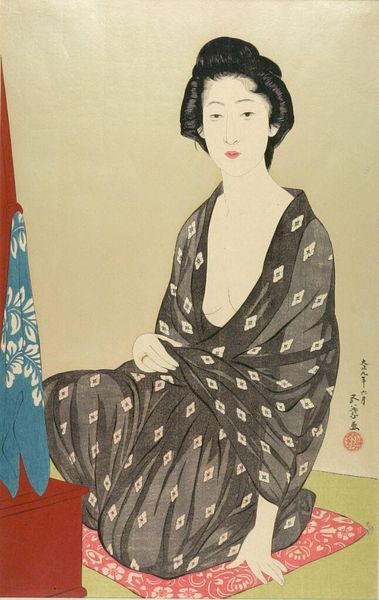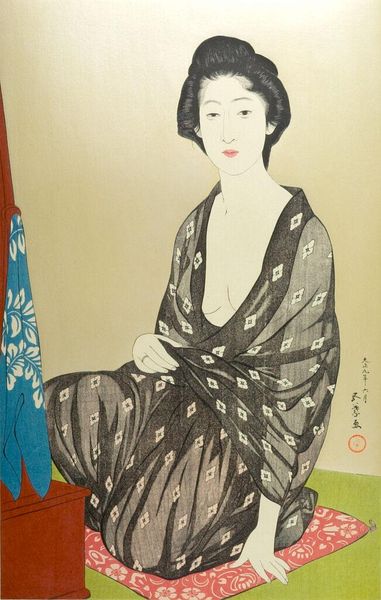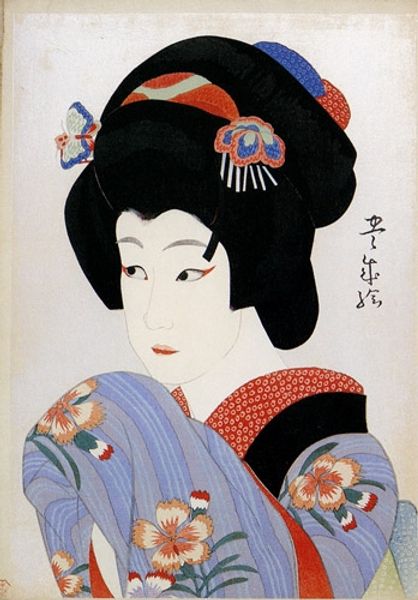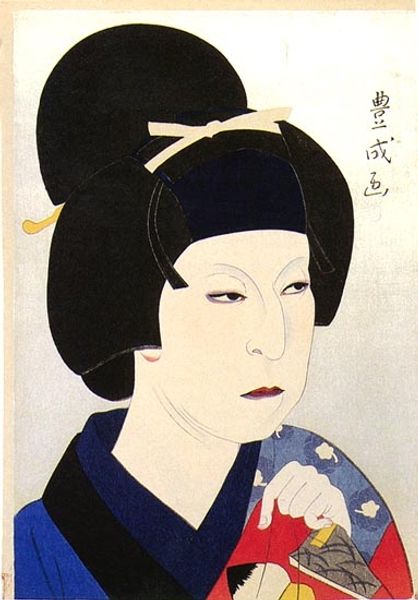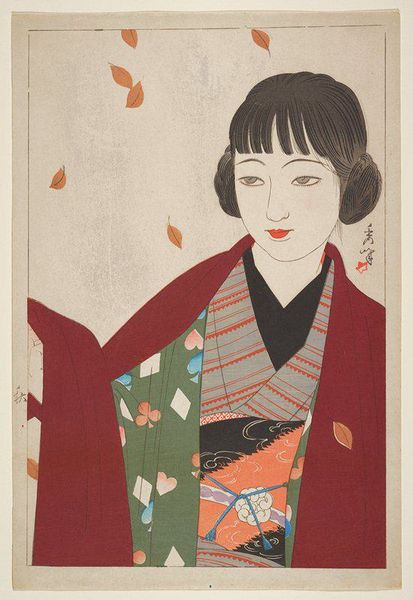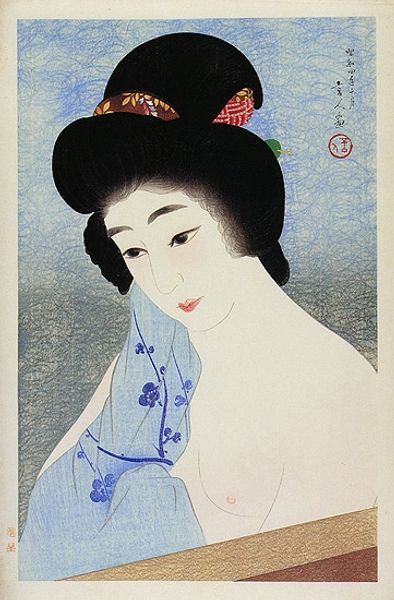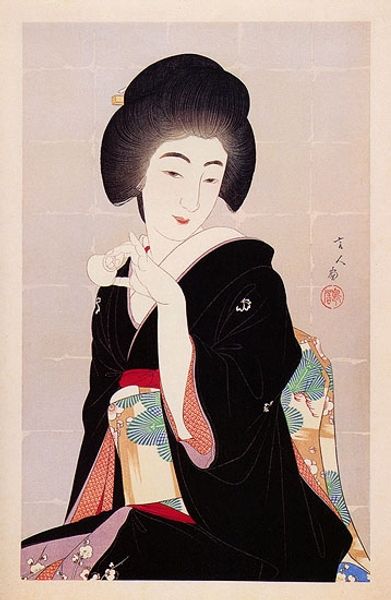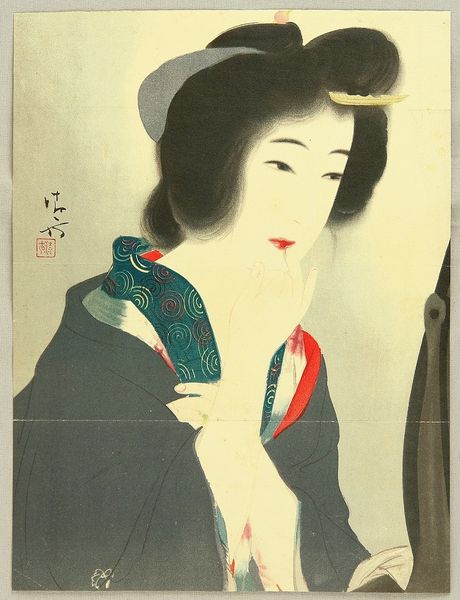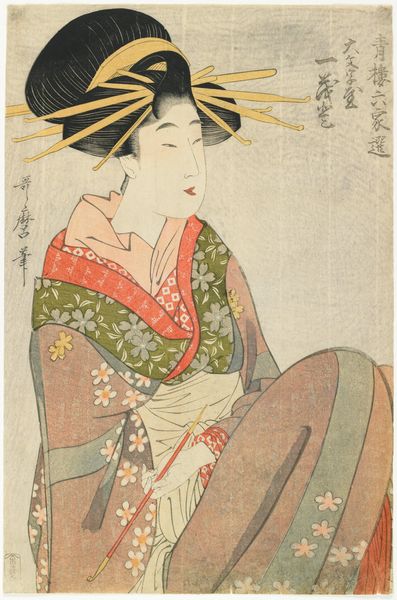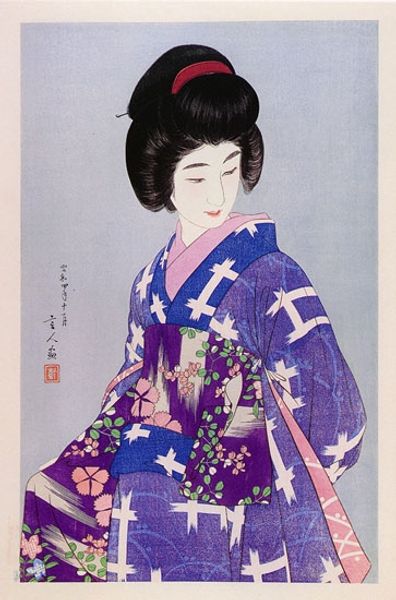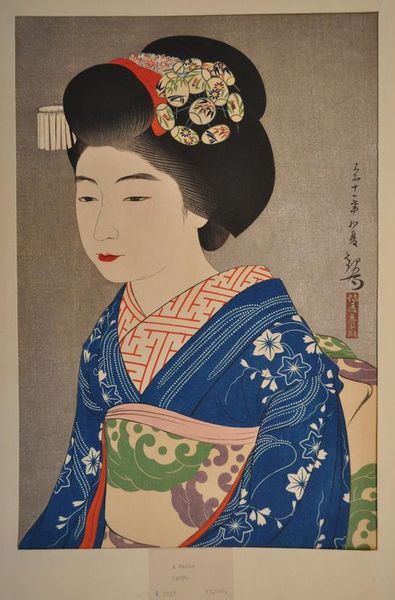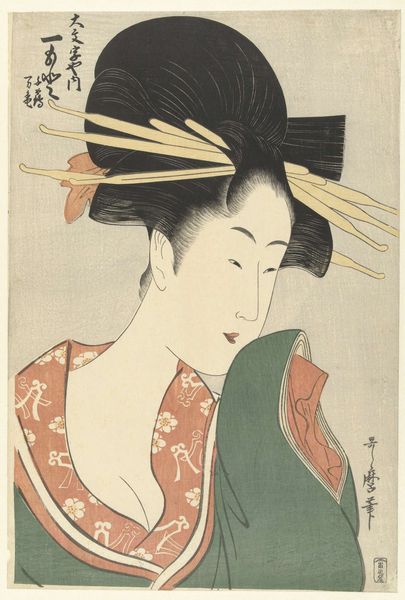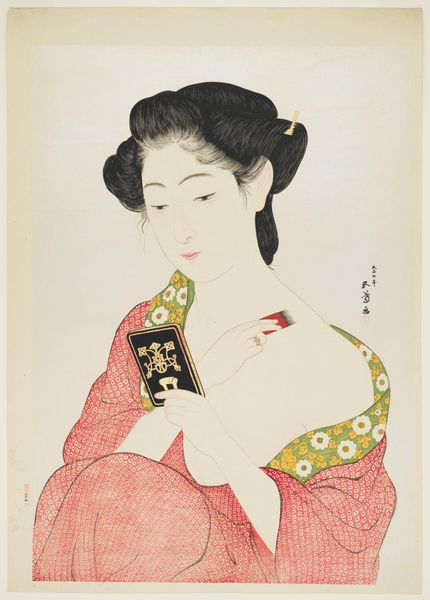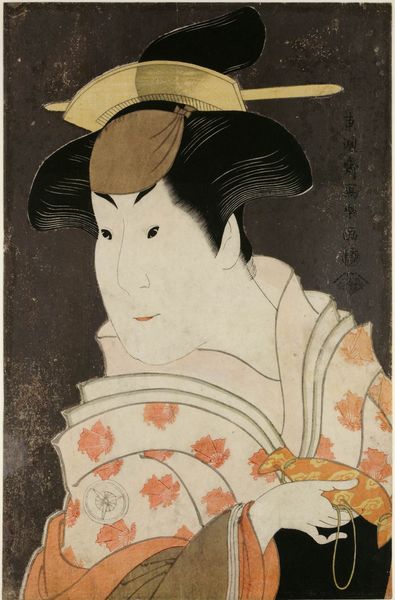
Copyright: Public domain
Editor: Here we have Goyo Hashiguchi’s “Woman in Summer Garment,” created around 1920. It’s a woodblock print, and what immediately strikes me is the woman's patterned kimono—it seems so integral to the composition. What can you tell me about the materials and their context? Curator: Let’s start with the process. Ukiyo-e prints, like this one, were a commercial enterprise involving the artist, block carvers, printers, and publishers. The materiality of wood—cherry wood specifically, prized for its fine grain—dictated the linework and even the color registration. How does understanding this collaborative, materially-driven process affect your interpretation of the “artist's” vision? Editor: It shifts my perspective. It’s not just about the artist's hand, but the skilled labor of multiple artisans and the demands of a consumer market. The materials *are* the message in a way. Curator: Precisely! The print’s accessibility via mass production allowed for a wider dissemination of imagery, including idealized representations of women, which influenced notions of beauty and status. And think about the pigments—the source of color, and the cost that went into sourcing them. Editor: So, the kimono itself—beyond just being depicted—becomes a signifier of class and cultural values through its material construction and representation? Curator: Absolutely. Consider the texture conveyed through the woodblock printing technique; that suggests a certain richness and quality, contributing to the overall message. Does considering these factors change your initial perception of the woman's portrait? Editor: It makes it more complex. I now see it less as a straightforward representation and more as a layered statement about production, consumption, and cultural ideals embedded within the materiality of the print itself. It's like, every block used to create this had a social story to tell. Curator: Indeed. Hopefully you now can view it through a lens which recognizes and questions how class, labor and cultural ideals are materialised in this type of work.
Comments
No comments
Be the first to comment and join the conversation on the ultimate creative platform.
